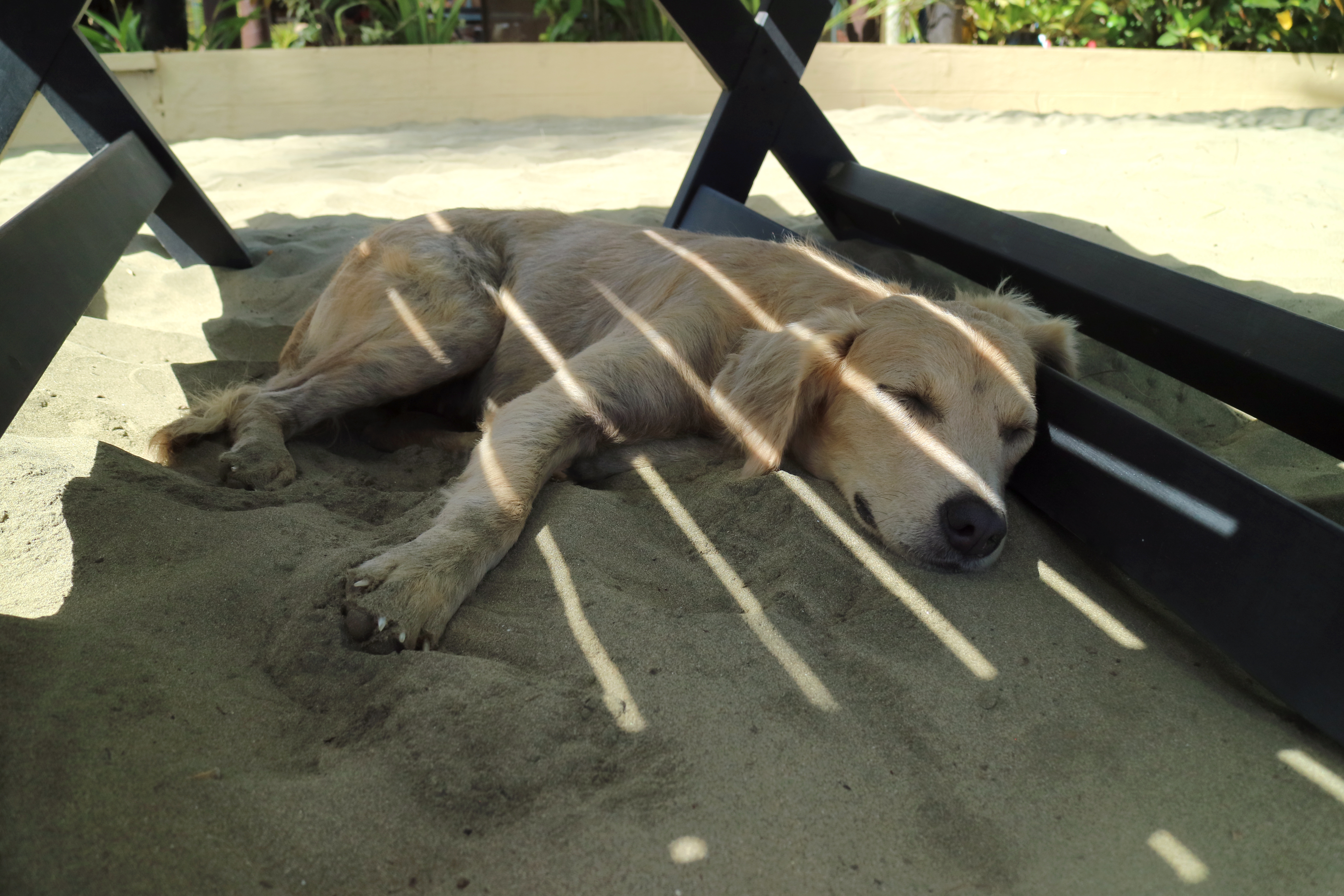We’ve been enjoying some amazing summer sun recently and while many of us enjoy soaring temperatures some of us have struggled to cope with the heat, and it’s no different for our pets. Many of our pets find it difficult to cope in high temperatures and high humidity and some can become seriously ill, so why is that?
Do pets sweat?
Dogs do sweat, but only through their feet and their mouths, which you probably know is why they pant and dribble when they are hot. The movement of the air across their tongue and mouth helps them to lose heat through the evaporation of moisture from their mouths.
Cats also sweat through their feet and if extremely hot will also pant, but in cats this is a sign of severe heat destress and you may need to help them cool down if you see them panting.
How can you help your pets keep their cool?
High humidity can make it more difficult to sweat, as we know only too well. Dogs and cats find high humidity with high temperatures difficult to deal with, so what can you do to help your pets?
Take walks at the coolest time of the day
Dogs love their walks but will prefer to go out early in the morning or late in the evening, when it’s cooler. And if you can walk somewhere with shade and water to paddle in, all the better.
Shallow, slow moving running water in a stream or river is safest for our dogs as lakes or reservoirs with no real flow of water can develop blooms of blue-green algae which is poisonous if ingested.
You might want to shorten walks for your pooch if they are a breed with a short muzzles such as a French Bulldogs , Pug or English Bulldog as they can find the heat makes breathing difficult for them and they can struggle to lose heat effectively and cool down. And maybe ease off the energetic ball games for all dogs as enthusiastic breeds can also get seriously over-heated from games that are too vigorous in the heat.
Make sure you provide shade and water
Cats and dogs will seek shade and a cool surface to lie on when it’s hot. If there’s a cooling breeze, sitting outside under a tree or in shade with plenty of water available and maybe a doggy paddling pool can be perfect for most dogs. However keep pets out of the sun in the hottest part of the day.
If you live in a flat or don’t have suitable outside space, make sure the rooms your dog has to roam in are cool and maybe provide a fan as well as lots of water to keep them comfortable.
It’s best not to provide chilled or iced water to dogs as it is thought it can cause the gut to twist causing Bloat. Just cold water from the tap is fine.

And of course, never leave your dog alone in the car even for a few minutes. The temperature in any car will sour really quickly even if it’s parked in the shade and you leave windows open.
Cats usually seek out a shady spot and do as little as possible when it’s hot but if you do see your cat panting they may be in heat distress so move them to a cooler spot with more shade, put a fan on them, cool their feet down and make sure they have cool water to drink.
If you think your dog is too hot or might be suffering from heat stroke what should you do about it?
Dogs can suffer heat stroke in high temperatures due to not being able to cool themselves quickly enough, or too much exercise in the heat. Dogs that are obese, older or very young, have a heart condition or have suffered heat stroke before are more prone to suffering. Breeds with thick double coats such as Husky’s, Tibetan Terriers or even the German Shepherd Dog can also suffer from heat stroke.
Those most at risk are probably the dogs with short muzzles such as the Pug or even the Cavalier King Charles Spaniel as their face shape makes it harder to pant as lose heat efficiently.
Your dog might be suffering from heat stroke in high temperatures if they have some of these symptoms:
- Are panting a lot and drooling excessively
- Seem in breathing distress
- Have a higher heart rate than normal
- Are restless or agitated
- Have a right red tongue
- Have very red or pale gums
- Suffer Diarrhoea or vomiting
If you think your dog or cat is suffering you should ring your vet for advice and immediately:
- move them to a cooler place
- Put a fan on them to help cool them
- Dampen their fur with a cold wet cloth, changed every couple of minutes. Don’t pour iced water on them as this can be too big a shock
- Cool their feet with cool water
- Let them drink small amounts of cool water if they want to
Prevention is always better than cure so always make sure your pets are kept cool as the temperatures rise and take out dog health insurance or cat health insurance to cover vet costs if you pet is unfortunate and ends up needing vet treatment.
